Abstract
A general impairment of liver mitochondrial enzymes is central to Reye's syndrome (RS). The respiration of isolated liver mitochondria was measured after the addition of concentrated normal serum or RS serum derived from 12 patients. RS serum stimulates oxygen consumption in isolated rat liver mitochondria. This effect is due to the oxidation of uric acid by peroxisomes contaminating the preparation and a stimulation of mitochondrial respiration (1.05 +/- 0.14 nmol of O2/min X mg of protein; control 0.30 +/- 0.08 nmol O2/min X mg). The stimulation of respiration occurs in the presence of all respiratory substrates, is dependent on the amount of serum added, and represents an uncoupling of oxidative phosphorylation. RS serum reduces ATP formation by 15-76%. The uncoupling effect correlates with the amount of free fatty acid in the serum sample and resembles the effect induced by the addition of a dicarboxylic fatty acid. Dicarboxylic fatty acids, especially long-chain dicarboxylic acids, impair ATP formation. Dicarboxylic acids were found in the serum of all RS patients and comprised as much as 54% of the total serum free fatty acids. 90% of the serum dicarboxylic acids were of 16-18 carbon lengths. The amount of dicarboxylic acids in the RS serum corresponded directly with the reduction in ATP formation by the RS serum. This demonstrates that dicarboxylic acids occur in RS and may be important in the general impairment of mitochondrial function in RS and other disorders where they are present.
Full text
PDF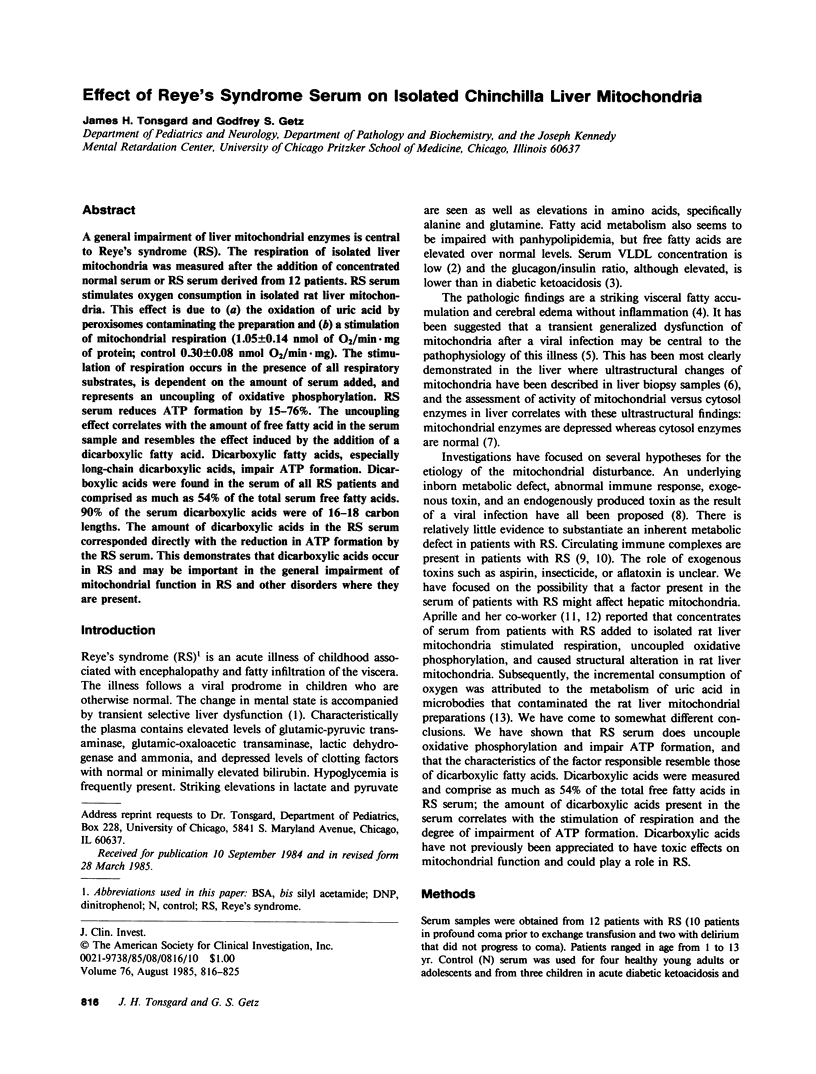
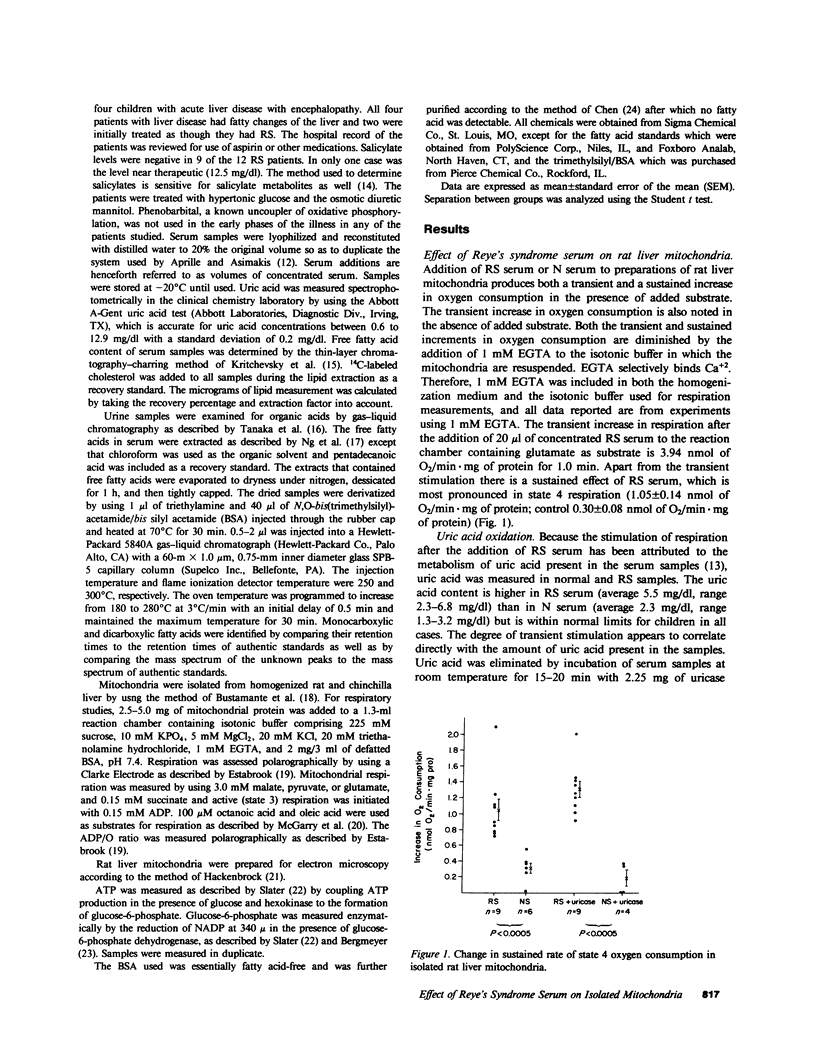
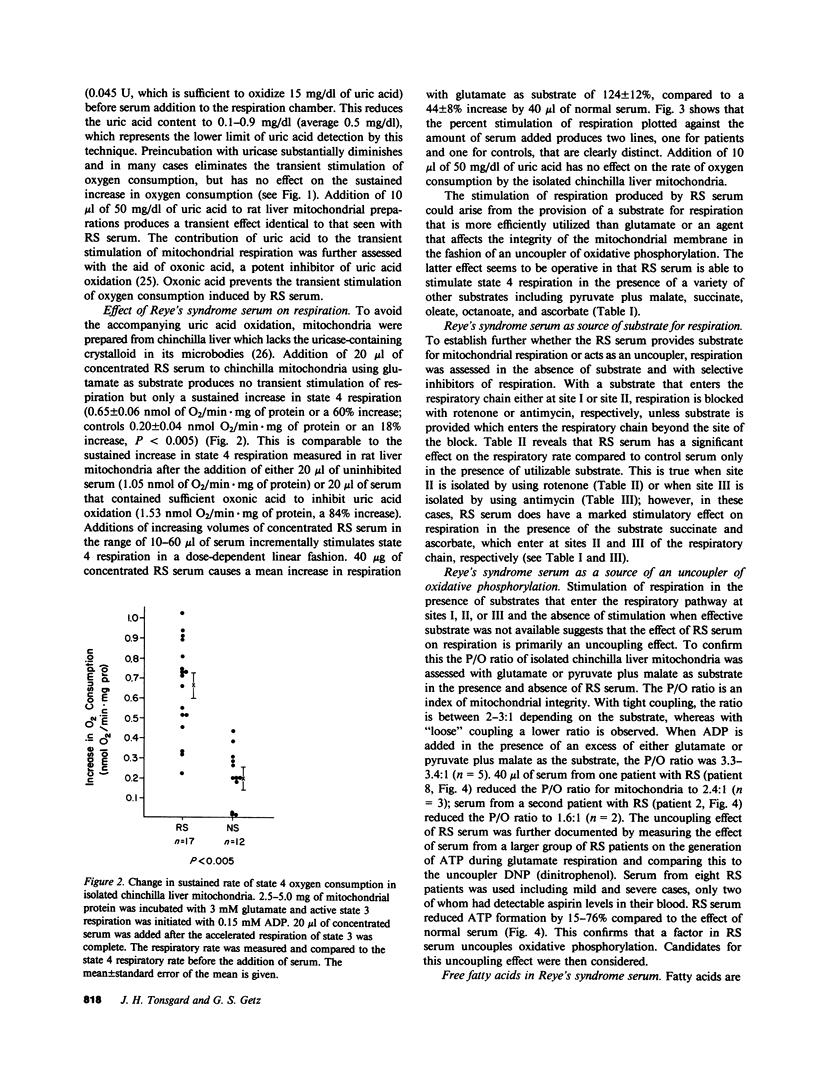
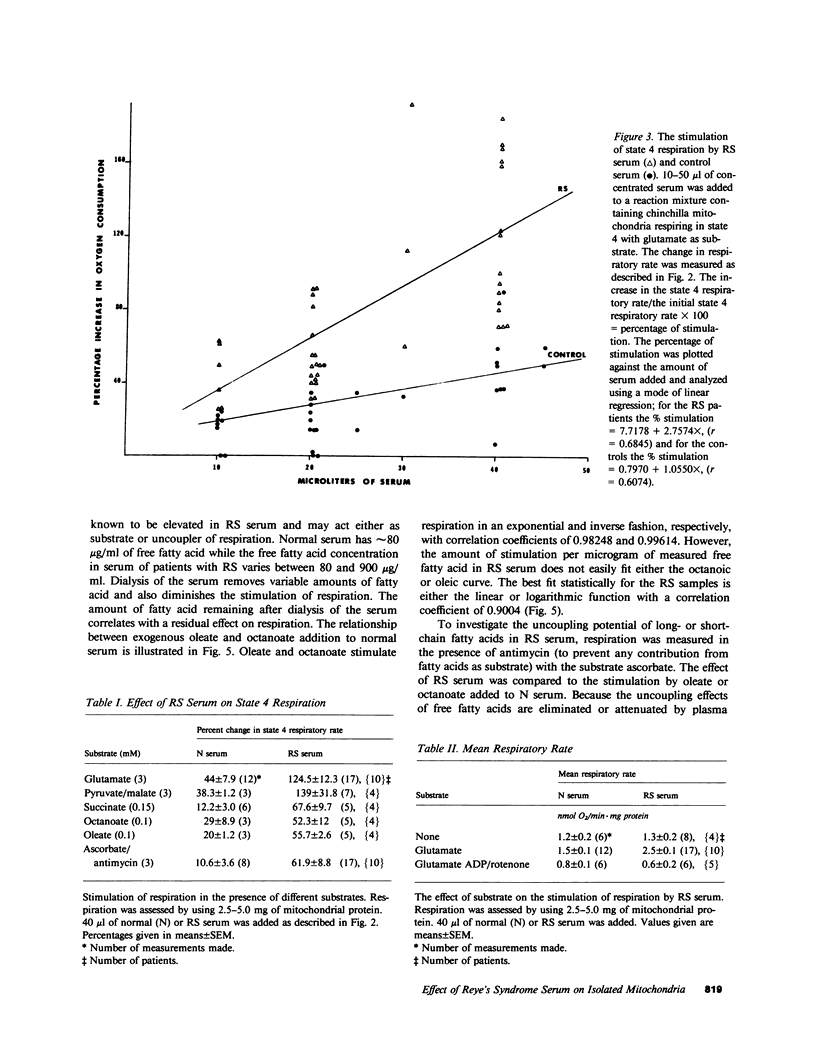
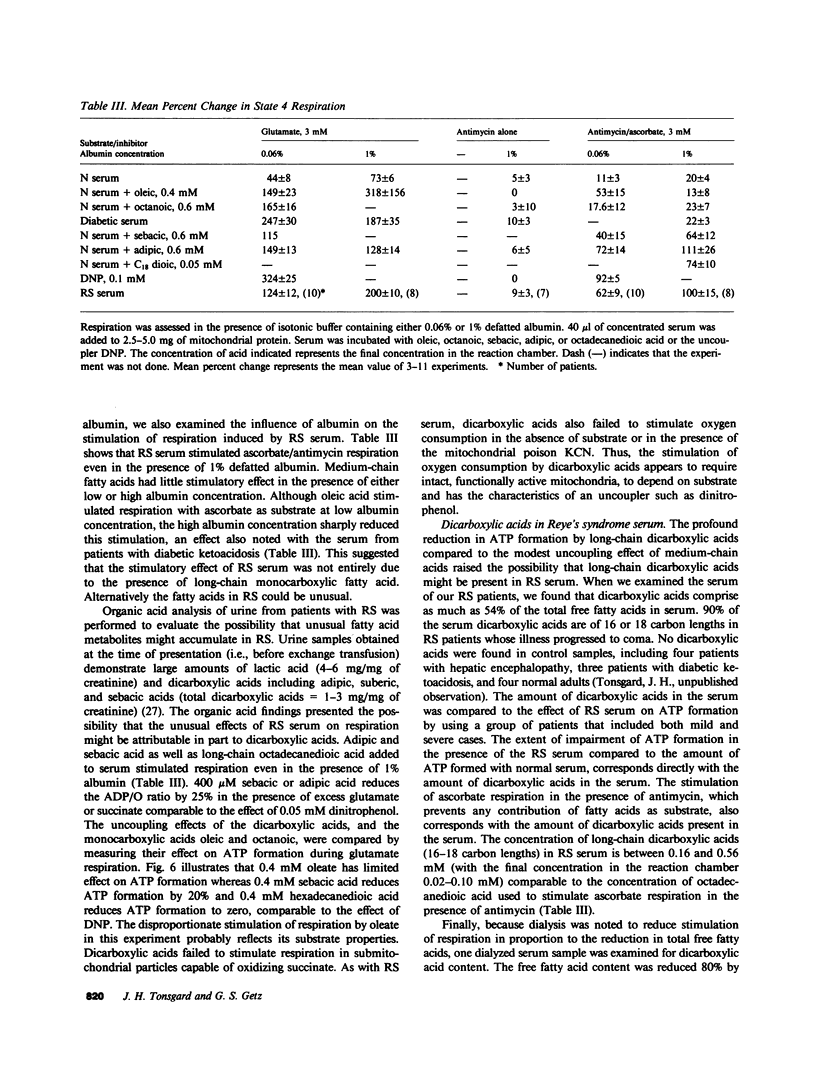
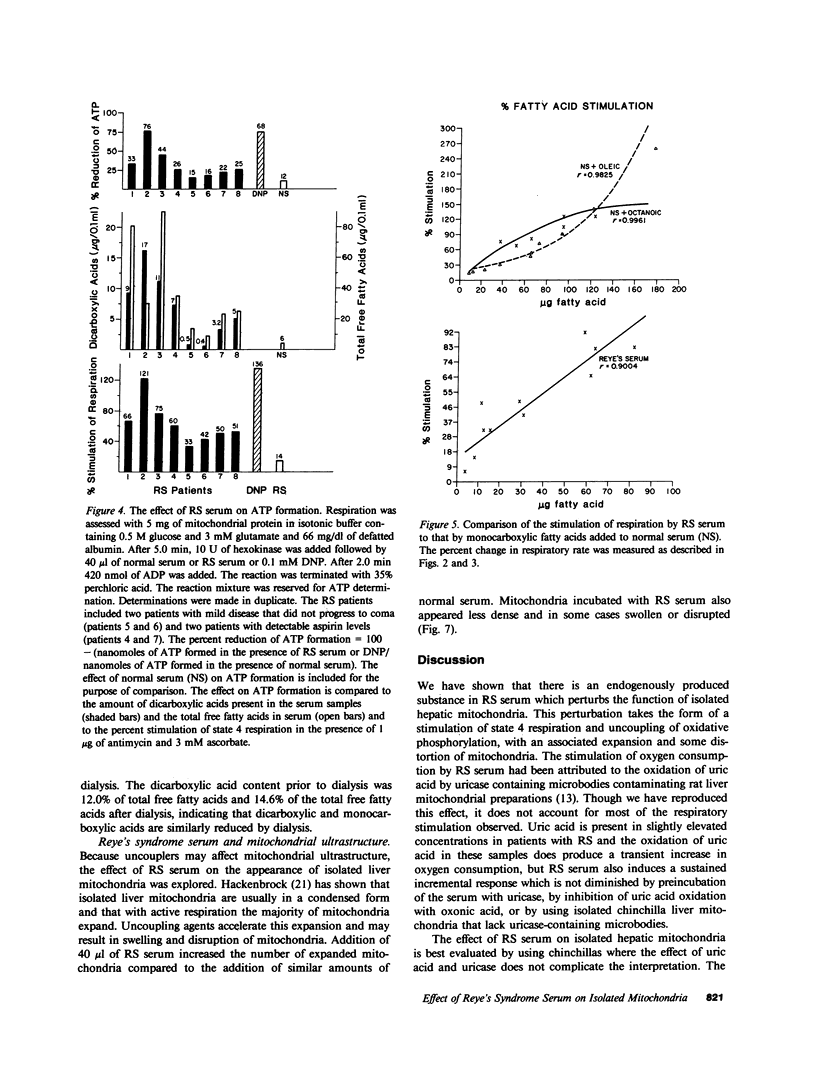
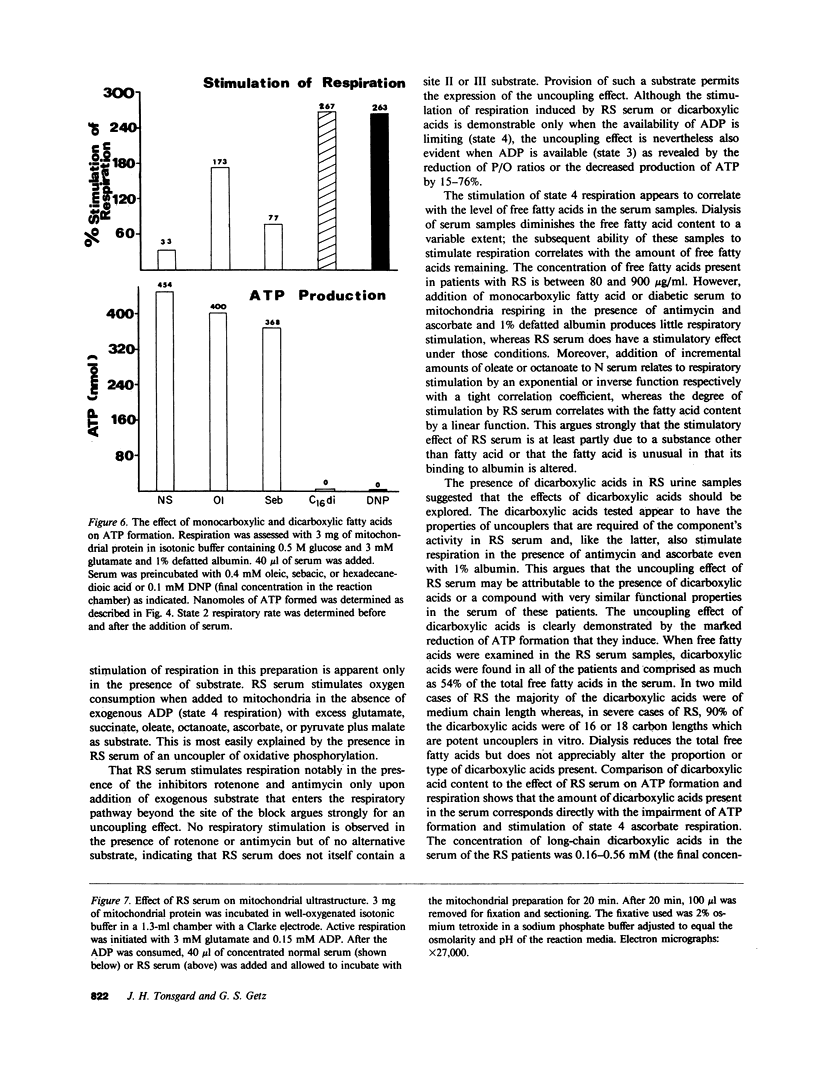
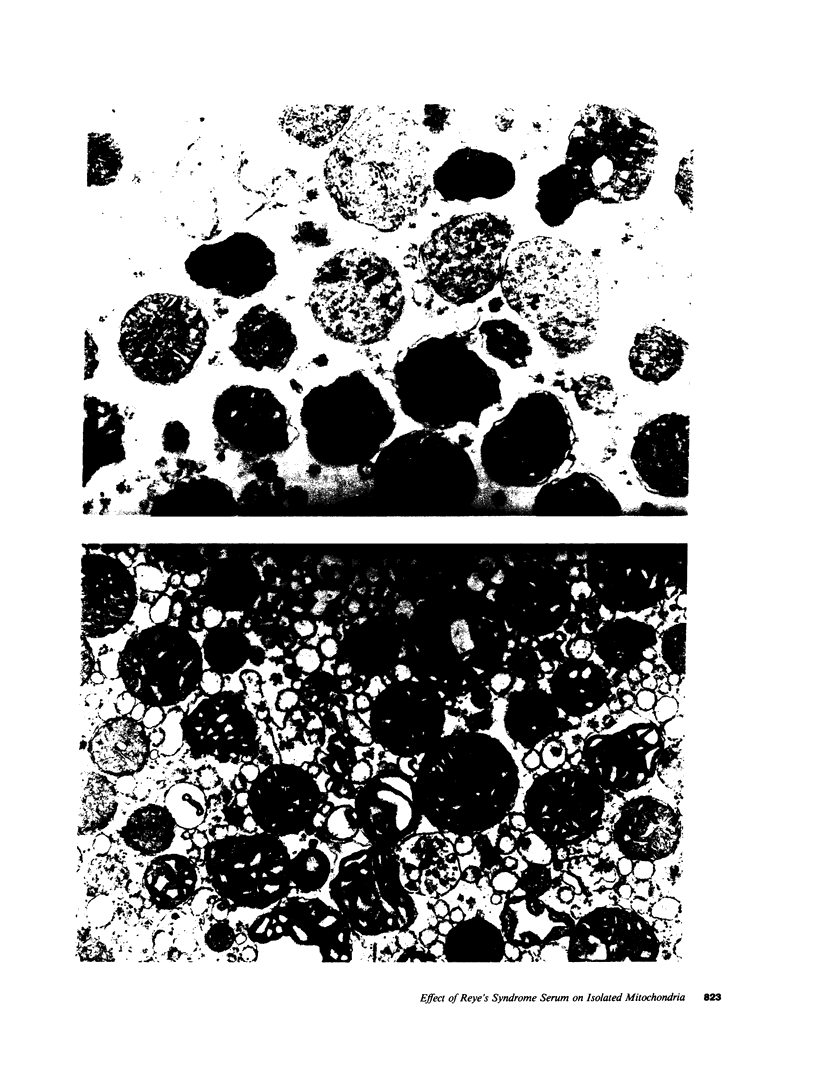
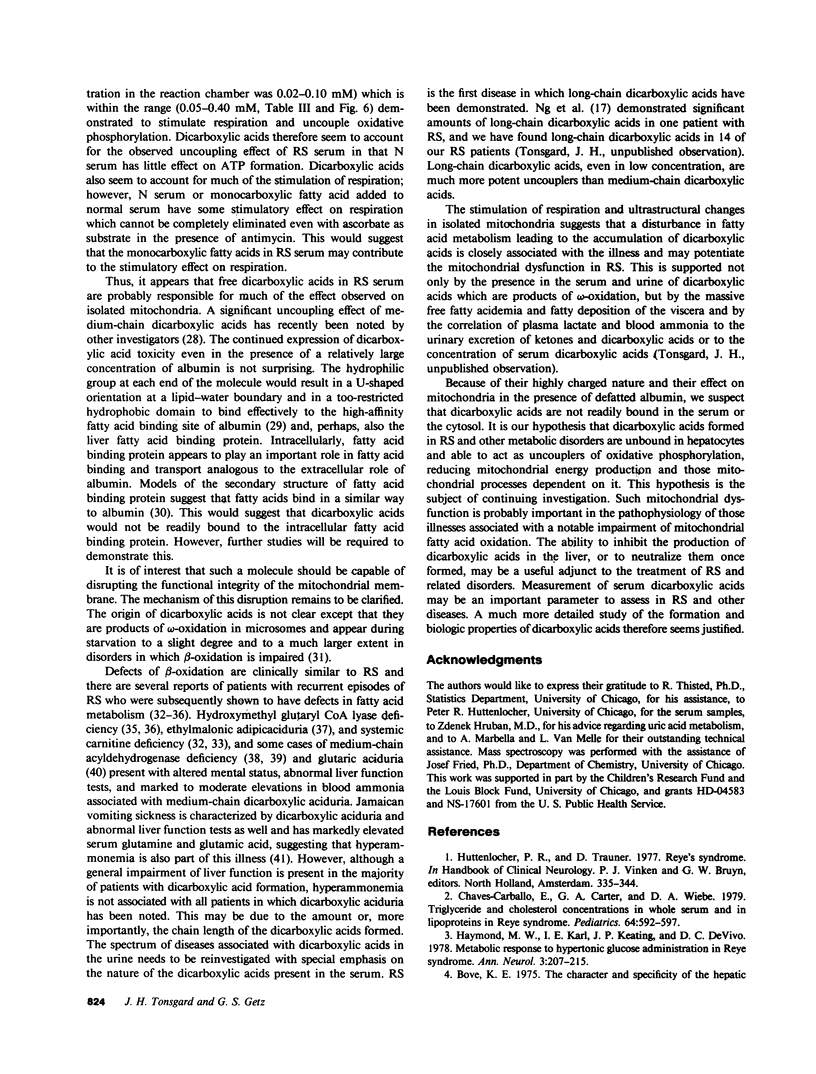
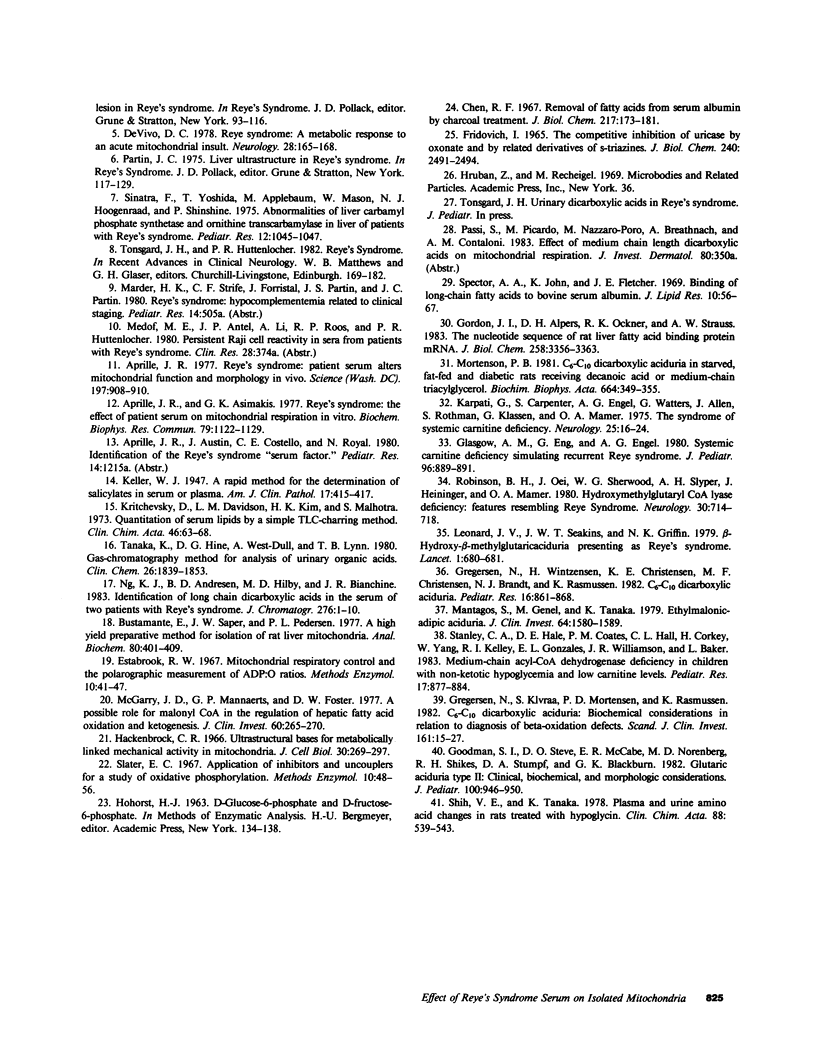
Images in this article
Selected References
These references are in PubMed. This may not be the complete list of references from this article.
- Aprille J. R. Reye's syndrome: patient serum alters mitochondrial function and morphology in vitro. Science. 1977 Aug 26;197(4306):908–910. doi: 10.1126/science.887930. [DOI] [PubMed] [Google Scholar]
- Asimakis G. K., Aprille J. R. Reye's syndrome: the effect of patient serum on mitochondrial respiration in vitro. Biochem Biophys Res Commun. 1977 Dec 21;79(4):1122–1129. doi: 10.1016/0006-291x(77)91122-6. [DOI] [PubMed] [Google Scholar]
- Bustamante E., Soper J. W., Pedersen P. L. A high-yield preparative method for isolation of rat liver mitochondria. Anal Biochem. 1977 Jun;80(2):401–408. doi: 10.1016/0003-2697(77)90661-3. [DOI] [PubMed] [Google Scholar]
- Chaves-Carballo E., Carter G. A., Wiebe D. A. Triglyceride and cholesterol concentrations in whole serum and in serum lipoproteins in Reye syndrome. Pediatrics. 1979 Nov;64(5):592–597. [PubMed] [Google Scholar]
- Chen R. F. Removal of fatty acids from serum albumin by charcoal treatment. J Biol Chem. 1967 Jan 25;242(2):173–181. [PubMed] [Google Scholar]
- FRIDOVICH I. THE COMPETITIVE INHIBITION OF URICASE BY OXONATE AND BY RELATED DERIVATIVES OF S-TRIAZINES. J Biol Chem. 1965 Jun;240:2491–2494. [PubMed] [Google Scholar]
- Glasgow A. M., Eng G., Engel A. G. Systemic carnitine deficiency simulating recurrent Reye syndrome. J Pediatr. 1980 May;96(5):889–891. doi: 10.1016/s0022-3476(80)80571-3. [DOI] [PubMed] [Google Scholar]
- Goodman S. I., Stene D. O., McCabe E. R., Norenberg M. D., Shikes R. H., Stumpf D. A., Blackburn G. K. Glutaric acidemia type II: clinical, biochemical, and morphologic considerations. J Pediatr. 1982 Jun;100(6):946–950. doi: 10.1016/s0022-3476(82)80525-8. [DOI] [PubMed] [Google Scholar]
- Gordon J. I., Alpers D. H., Ockner R. K., Strauss A. W. The nucleotide sequence of rat liver fatty acid binding protein mRNA. J Biol Chem. 1983 Mar 10;258(5):3356–3363. [PubMed] [Google Scholar]
- Gregersen N., Kølvraa S., Mortensen P. B., Rasmussen K. C6-C10-dicarboxylic aciduria: biochemical considerations in relation to diagnosis of beta-oxidation defects. Scand J Clin Lab Invest Suppl. 1982;161:15–27. doi: 10.3109/00365518209168396. [DOI] [PubMed] [Google Scholar]
- Gregersen N., Wintzensen H., Christensen S. K., Christensen M. F., Brandt N. J., Rasmussen K. C6-C10-dicarboxylic aciduria: investigations of a patient with riboflavin responsive multiple acyl-CoA dehydrogenation defects. Pediatr Res. 1982 Oct;16(10):861–868. doi: 10.1203/00006450-198210000-00012. [DOI] [PubMed] [Google Scholar]
- Hackenbrock C. R. Ultrastructural bases for metabolically linked mechanical activity in mitochondria. I. Reversible ultrastructural changes with change in metabolic steady state in isolated liver mitochondria. J Cell Biol. 1966 Aug;30(2):269–297. doi: 10.1083/jcb.30.2.269. [DOI] [PMC free article] [PubMed] [Google Scholar]
- Haymond M. W., Karl I. E., Keating J. P., DeVivo D. C. Metabolic response to hypertonic glucose administration in Reye syndrome. Ann Neurol. 1978 Mar;3(3):207–215. doi: 10.1002/ana.410030305. [DOI] [PubMed] [Google Scholar]
- Karpati G., Carpenter S., Engel A. G., Watters G., Allen J., Rothman S., Klassen G., Mamer O. A. The syndrome of systemic carnitine deficiency. Clinical, morphologic, biochemical, and pathophysiologic features. Neurology. 1975 Jan;25(1):16–24. doi: 10.1212/wnl.25.1.16. [DOI] [PubMed] [Google Scholar]
- Kritchevsky D., Davidson L. M., Kim H. K. Quantitation of serum lipids by a simple TLC-charring method. Clin Chim Acta. 1973 Jun 14;46(1):63–68. doi: 10.1016/0009-8981(73)90103-4. [DOI] [PubMed] [Google Scholar]
- Leonard J. V., Seakins J. W., Griffin N. K. beta-Hydroxy-beta-methyglutaricaciduria presenting as Reye's syndrome. Lancet. 1979 Mar 24;1(8117):680–680. doi: 10.1016/s0140-6736(79)91137-1. [DOI] [PubMed] [Google Scholar]
- Mantagos S., Genel M., Tanaka K. Ethylmalonic-adipic aciduria. In vivo and in vitro studies indicating deficiency of activities of multiple acyl-CoA dehydrogenases. J Clin Invest. 1979 Dec;64(6):1580–1589. doi: 10.1172/JCI109619. [DOI] [PMC free article] [PubMed] [Google Scholar]
- McGarry J. D., Mannaerts G. P., Foster D. W. A possible role for malonyl-CoA in the regulation of hepatic fatty acid oxidation and ketogenesis. J Clin Invest. 1977 Jul;60(1):265–270. doi: 10.1172/JCI108764. [DOI] [PMC free article] [PubMed] [Google Scholar]
- Mortensen P. B. C6--C10-dicarboxylic aciduria in starved, fat-fed and diabetic rats receiving decanoic acid or medium-chain triacylglycerol. An in vivo measure of the rate of beta-oxidation of fatty acids. Biochim Biophys Acta. 1981 May 22;664(2):349–355. doi: 10.1016/0005-2760(81)90057-6. [DOI] [PubMed] [Google Scholar]
- Ng K. J., Andresen B. D., Hilty M. D., Bianchine J. R. Identification of long chain dicarboxylic acids in the serum of two patients with Reye's syndrome. J Chromatogr. 1983 Aug 12;276(1):1–10. doi: 10.1016/s0378-4347(00)85059-8. [DOI] [PubMed] [Google Scholar]
- Robinson B. H., Oei J., Sherwood W. G., Slyper A. H., Heininger J., Mamer O. A. Hydroxymethylglutaryl CoA lyase deficiency: features resembling Reye syndrome. Neurology. 1980 Jul;30(7 Pt 1):714–718. doi: 10.1212/wnl.30.7.714. [DOI] [PubMed] [Google Scholar]
- Shih V. E., Tanaka K. Plasma and urine amino acid changes in rats treated with hypoglycin. Clin Chim Acta. 1978 Sep 15;88(3):539–543. doi: 10.1016/0009-8981(78)90289-9. [DOI] [PubMed] [Google Scholar]
- Spector A. A., John K., Fletcher J. E. Binding of long-chain fatty acids to bovine serum albumin. J Lipid Res. 1969 Jan;10(1):56–67. [PubMed] [Google Scholar]
- Stanley C. A., Hale D. E., Coates P. M., Hall C. L., Corkey B. E., Yang W., Kelley R. I., Gonzales E. L., Williamson J. R., Baker L. Medium-chain acyl-CoA dehydrogenase deficiency in children with non-ketotic hypoglycemia and low carnitine levels. Pediatr Res. 1983 Nov;17(11):877–884. doi: 10.1203/00006450-198311000-00008. [DOI] [PubMed] [Google Scholar]
- Tanaka K., Hine D. G., West-Dull A., Lynn T. B. Gas-chromatographic method of analysis for urinary organic acids. I. Retention indices of 155 metabolically important compounds. Clin Chem. 1980 Dec;26(13):1839–1846. [PubMed] [Google Scholar]




